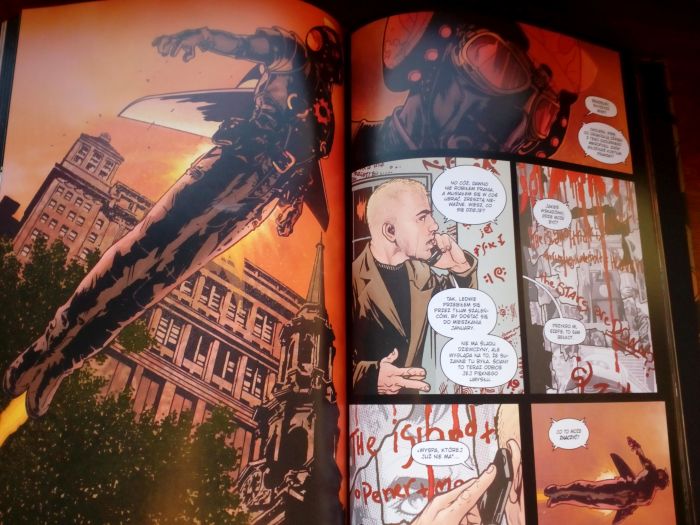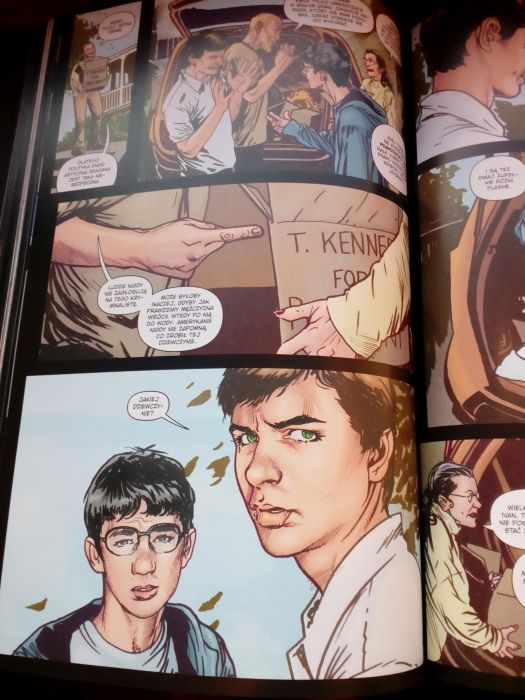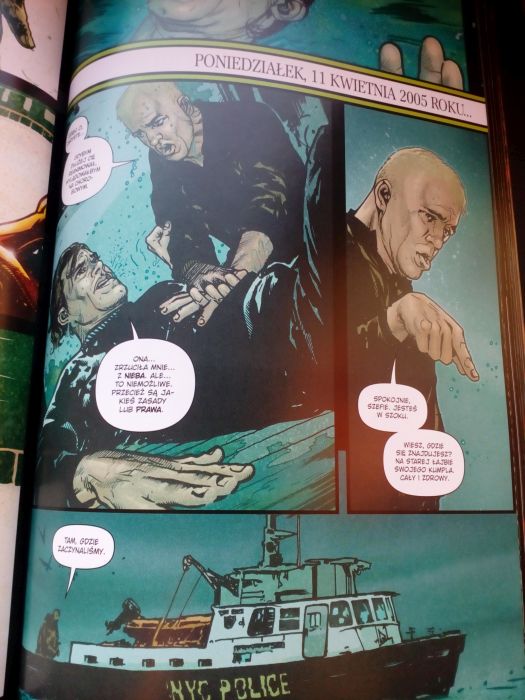Brian K. Vaughan is a creator known for his uncompromising attitude. Most often, he creates relatively short, closed stories, the focus of which is not the action, but the characters of the characters. They develop and their knowledge and worldview are put to very hard tests. The undoubted advantage of the talented scriptwriter’s comics are also the surprising endings, where the last scene can change the view of the entire plot. Does Ex Machina also fit into this trend? This is the last volume so he will answer this question.

Why be a hero?
Vaughan paints a picture of a world in which the one and only superhero may be the mascot of society, but his actions often do more harm than good. So he decides to enter the world of politics and become the mayor of New York. He does not know, however, how fatal and morally questionable path he chose was. The scriptwriter in the following chapters shows that despite his best intentions, a political career was not the best choice. Ex Machinait is not an idyllic story about human merits and love. The hero, who at the very beginning shows naive faith in people and their good hearts, with time – as a result of many decisions consisting in choosing the lesser evil – becomes as snappy and cynical as the people around him. This unhappy conclusion was with the reader from the very beginning of the first volume, and it was intensified with each subsequent part.
Ex Machina shows a realistic world in which one extraordinary creature appears. However, unlike the mainstream, here we find not uncritical social approval for such a person, but a mixture of different feelings towards him. Suspicion mixed with surprise, and sometimes even amusement, is in contradiction with the adoration of characters dressed in colorful costumes served by other comics. The hero also does not look like a typical American knitted shirt – all his actions and choices make not only the world change, but also himself. The interactions between the characters create a real mosaic, acquiring more and more colors over time. Vaughan, on the other hand, leads everything to an inevitable end, when the colorful stained glass is about to shatter into pieces.

What is the world of sorrow and joy like?
Tony Harris is responsible for the graphic design, whose relatively realistic, but not overloaded with effects line perfectly reflects the comic’s plot. Thanks to simplicity and minimalism, it focuses on the emotions that are clearly visible on the characters’ faces. They thus become the most important element of the story in absolutely every respect. The colors applied by JD Mettler, usually subdued, sometimes even take on a neon and kitschy atmosphere – thus creating a contrast that perfectly matches the figure of the beloved mayor of the Big Apple. Therefore, it is difficult to deny the comic compatibility between the content and its visualization.
The Egmont publishing house, which released the series in five thick volumes with hard covers and varnished paper, is responsible for the decent appearance. The high quality of the print, combined with the professional translation of Tomasz Kłoszewski, makes the series about the adventures of the mayor and his team a great decoration for any comic book collection.

Is it worth spending time on politics?
Ex Machina is undoubtedly one of the most interesting stories among superhero-related titles. It is true that individual characters endowed with powers appear here, but it is not the clashes that are in the center of attention here – there are human dramas, behavior in times of danger and mutual interactions in it. The actors of the tragedy seem to be of flesh and blood, and thus the reader follows their fate with interest until the last pages. Adding to this the fact that Brian K. Vaughan ends the series with surprising events in his own style, we get a story that should interest every fan of interesting and unconventional stories.

